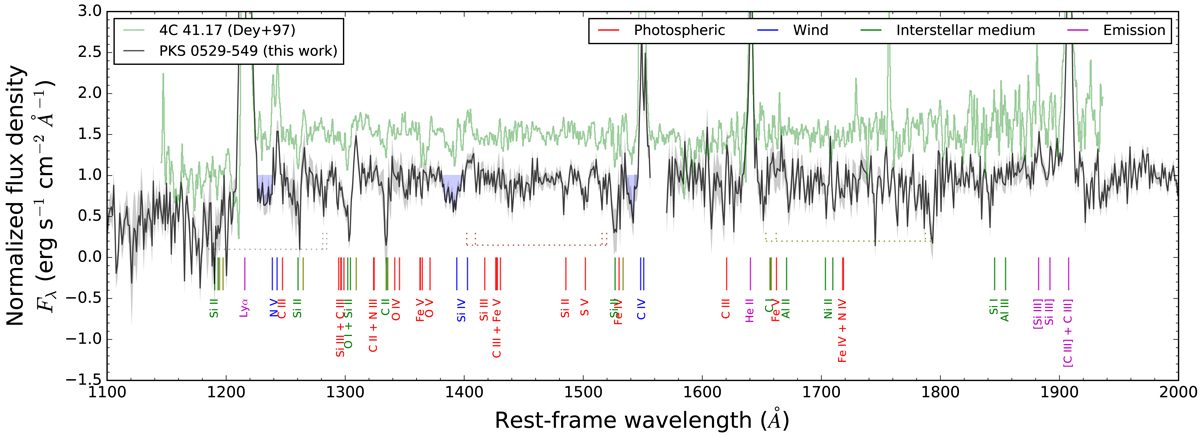Fig. 2.

Rest-frame continuum-normalized UV spectra of PKS 0529-549 (black; this work) and 4C 41.17 (green; Dey et al. 1997). We indicate the wavelengths of the most prominent lines in the spectra annotated with the ion responsible. The colours represent the likely dominant origin of the lines: red for stellar photospheric, blue for resonant doublets from stellar winds and AGN, green for low-ionization lines in the interstellar medium, olive for their associated excited fine-structure emission, and purple for bright emission lines. The blue shades show the absorption wings of the resonant lines originating from stellar winds. The dotted lines indicate possible ISM absorption of Fe IIλλ2587,2600 and Mg IIλλ2796,2804 at z = 0.64 (grey), z = 0.94 (brown), and z = 1.28 (olive). For easier visualization, the spectrum of PKS 0529-549 has been binned by twice the FWHM (i.e., variance-weighted mean for every 18/21 pixels for the UVB/VIS arms, respectively). The spectrum of 4C 41.17 has been smoothed by a Gaussian kernel, and shifted upwards by 0.5. The grey shade shows the noise as propagated from the X-shooter pipeline without accounting for correlated noise. The spectrum of PKS 0529-549 has been shifted to vacuum wavelengths. The gap at ∼1550 − 1570 Å is the noisy region between the UVB and VIS arms of X-shooter.
Current usage metrics show cumulative count of Article Views (full-text article views including HTML views, PDF and ePub downloads, according to the available data) and Abstracts Views on Vision4Press platform.
Data correspond to usage on the plateform after 2015. The current usage metrics is available 48-96 hours after online publication and is updated daily on week days.
Initial download of the metrics may take a while.


